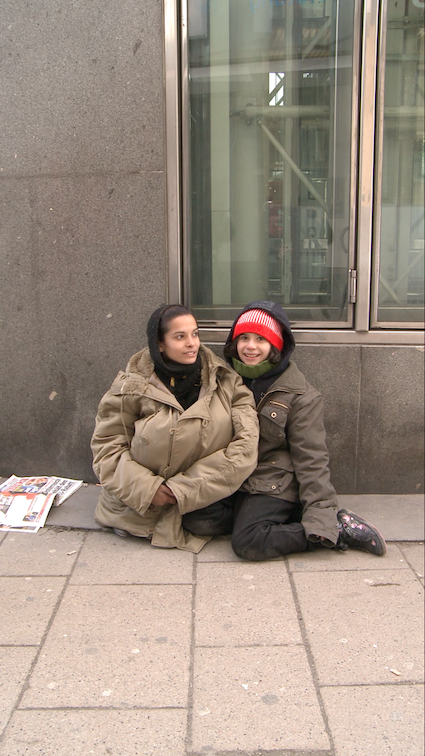Seven channel video installation (HD, colour, sound)
Nine persons – partly performers, partly beggars in real life – portray beggars, themselves or themselves as beggars. The definitions of professional portrayal and authentic situations blur facing the impossibility of recognizing “real” adversity by observation. How must beggars – comparable to the demands of other working environments, not just in performing arts – portray poverty in order to fulfill the expectations attached to their role? Is the authenticity of the portrayal more relevant than the authenticity of the adversity?
Restrictive dealing with beggars and poverty determines public discussions in the media and politics. Here a tenor toward symptom elimination and conspiracy theories (“Beggar mafia”) appears to mark a climax in the helplessness regarding consequences of worldwide injustice.
Emotions evoked by the adversity or helplessness of the “other” can be observed and reflected in a “protected space” – that is, time- and spacewise shifted – as we do not have to react immediately to encounters with present persons.
This work, based on Kutlug Ataman’s video installation Beggars, is an homage to the artist and can also be regarded as an ambiguous commentary on the controversial and complex discussions about copyright law and art. Inconsistencies between rules protecting intellectual property and the referentiality based art production system are made clear by deliberately referring to the idea as juristically not protectable basis of artistic work.
In this work, referentiality as a basis of cultural developments is being concatenated with patterns of social phenomena and structural conditions of artistic production.

